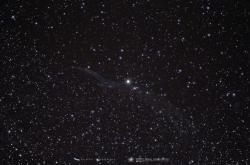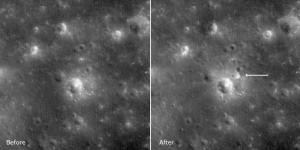
No Public Stargazing Tonight
- Where:
- Frosty Drew Observatory
- When:
- Friday October 31, 2014 - CLOSED
- Cost:
Frosty Drew Observatory will not open tonight for stargazing in observance of Halloween and will return to our regular Friday night Stargazing schedule on November 7th. Tonight's weather is looking rather grim for celestial viewing anyway with clouds, showers, and wind gusts as high as 25mph in the forecast; all of which would keep us from observing. The bright first quarter Moon would have been with us until 11:52 p.m. offering stunning lunar views.
Tonight's grim forecast may not make for a great night of stargazing, though will make an excellent night for spooks and tricks or treats. So set out, get freaked out, and have an excellent Halloween!
-------------------------------------------------------------------------
Weekly Happenings
Scott MacNeill
In the wake of the catastrophic engine failure that cost Orbital Sciences their Cygnus capsule and NASA the ISS resupply package, we can remember a very successful launch out of the NASA Wallops Flight Facility in VA; the NASA Lunar Atmospheric and Dust Environment Explorer (LADEE). LADEE launched on September 6, 2013 on the Minotaur V vehicle and was spectacularly visible along the Northeast US coastline. On April 18, 2014, after successfully completing its 160 day mission, LADEE made a final orbit of the Moon and impacted, as planned, on the extreme western limb of the lunar surface just east of the Sundman V crater rim. Skip ahead six months and the NASA Lunar Reconnaissance Orbiter (LRO) has spotted the LADEE impact site and resulting impact crater.
The LADEE mission was a mission of firsts. Understanding our nearest celestial neighbor will help us better understand other solar system bodies like asteroids, Mercury, and the moons of the outer planets. LADEE collected detailed information about the structure and composition of the tenuous atmosphere around the Moon, called a Surface Boundary Exosphere. LADEE was also the first mission to utilize a dedicated two-way communications system using laser instead of radio, paving the way for high data exchange rates for future missions. Finally, LADEE was the first lunar probe to fly over 100 orbits around the Moon at extremely low altitudes.
The Lunar Reconnaissance Orbiter Camera (LROC) team identified the impact site using recently developed software designed to identify new impact craters by comparing before and after images captured using the Narrow Angle Camera (NAC). Identification of the LADEE impact site was a test of the effectiveness of the new software. The impact crater itself is less than ten feet in diameter, making it quite small and difficult to identify. This is due to the relatively slow descent (3,800mph), low density and low mass of the LADEE spacecraft. Aside from the awesome photos of the LADEE impact site, get ready for some stunning impact crater identification as the LRO mission continues to mesmerize.
Learn more about some of LADEEs accomplishments. Then check out the LRO mission page and catch up with some of the amazing things that the LRO team is accomplishing!
-Scott


